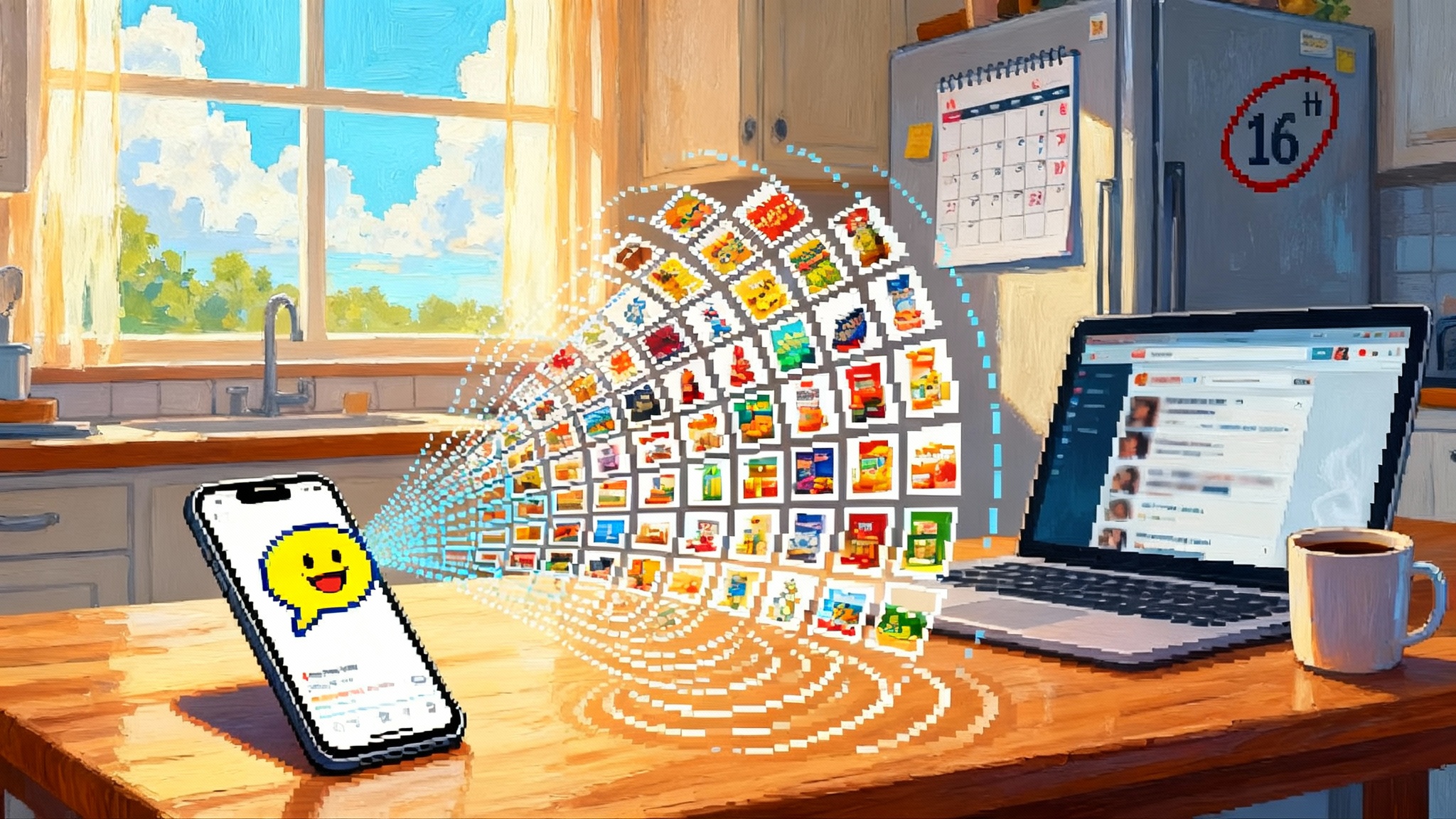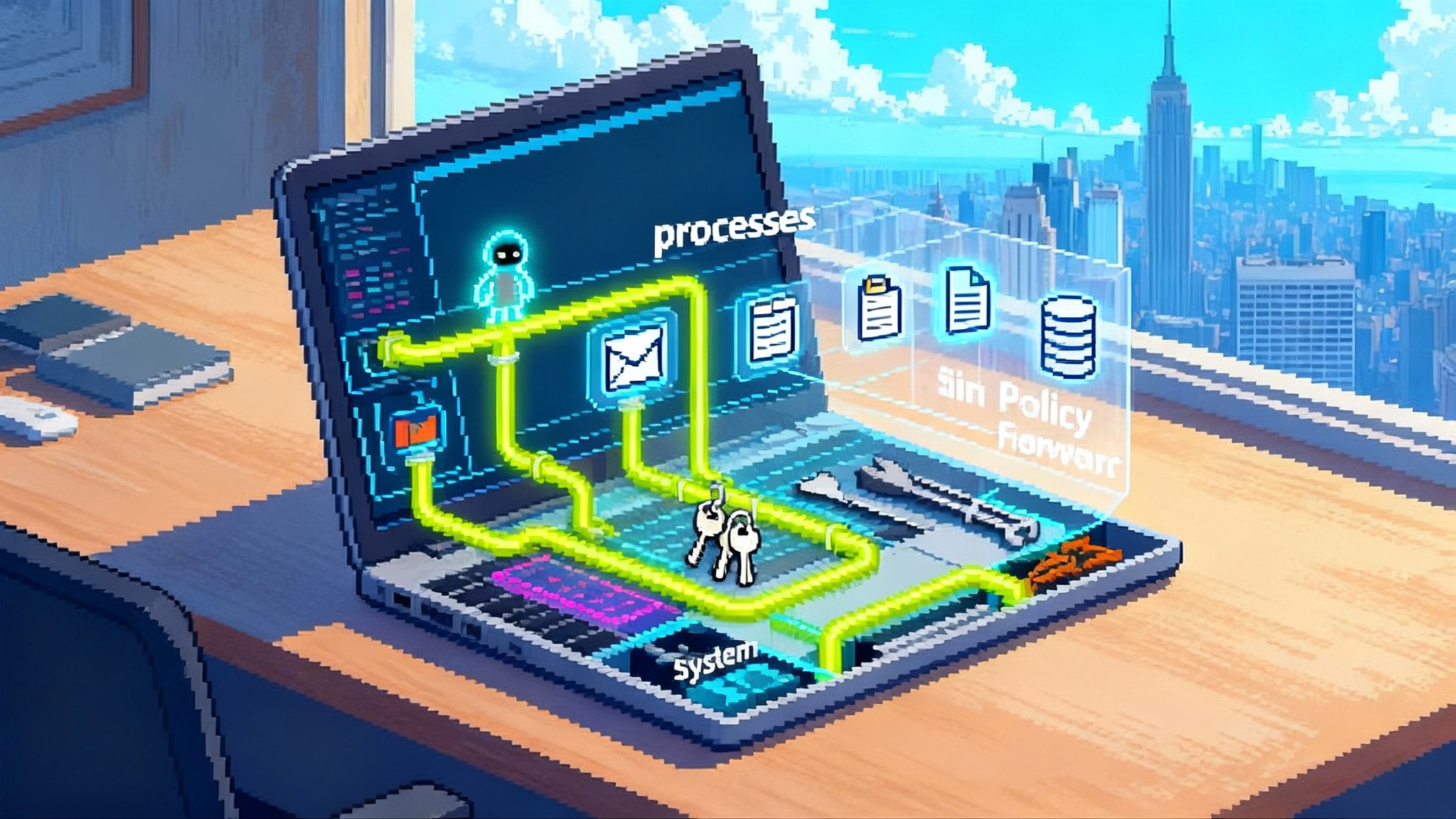When the House Starts to Think: Ambient Agents Move In
Smart homes are shifting from talk-to-me gadgets to agents that perceive, remember, and coordinate. This guide explains how the home graph, sensors, privacy rules, and subscriptions change daily life and what to do next.

Your next assistant has a street address
A quiet shift is turning the smart home from a set of gadgets into a place that can reason. Google has started early access for Gemini for Home on Nest speakers and displays in the United States, while the redesigned Google Home app now centers a conversational agent that understands rooms, devices, routines, and camera history. If you want the official tour, see Google’s own Google Home redesign overview.
Amazon is marching the same direction. Alexa Plus, a rebuilt version of Alexa, is moving from a talk-to-me helper to a do-it-for-me home agent. New Echo hardware arrives with more microphones, custom silicon, and sensor fusion so the system can notice what is happening without waiting for a wake word. Panos Panay’s reveal framed it as an assistant that remembers, coordinates, and acts across services. For Amazon’s framing, read Introducing Alexa Plus.
Samsung is commercializing its Ballie home robot and expanding Home AI features across appliances and SmartThings. That is a reminder that this wave is not just about speakers and screens. Refrigerators, washers, and energy hubs are becoming sensor-packed nodes in a network that can reason about the household.
Put it together and the real story emerges: the home itself is becoming a situated intelligence. This is not a flashy chat on your phone. It is a persistent, place-based agent that observes, remembers, and coordinates on your behalf.
From gadgets to delegated household agency
Old smart homes were command and control. You spoke a phrase or tapped a tile, the device obeyed, and that was that. Ambient agents invert the workflow. You grant the house a job to be done and a boundary for doing it; it decides when and how to act.
Here is a concrete example. You say, “We are out for the evening. Keep the dog out of the nursery, turn the porch lights to warm white at sunset, record visitors, and text me a clip if anyone lingers at the gate longer than thirty seconds. If the thermostat sees the living room window open for five minutes, turn climate off until it closes.” A legacy assistant would need five or six separate routines with brittle triggers. An ambient agent can infer the scenes from natural language, compile rules across devices, apply exceptions, and keep state about what already happened.
Two design shifts make this possible:
- The house has memory. Routines, presence, and the last known state of doors, windows, and lights are part of a shared model of the home. Google calls its version the home graph. Amazon visualizes something similar with Map View on Echo Hub and in the Alexa app. The important part is not the brand, but the fact that rooms, devices, and people now live in a single, queriable structure.
- The house has senses. Microphones, cameras, radar, temperature, humidity, energy meters, occupancy sensors, and appliance telemetry provide a live feed of what is happening. New Echo hardware adds custom accelerators and sensor fusion so the system can notice patterns. Nest cameras and third party cameras feed summaries into the new Google Home app. Samsung’s appliances contribute their own telemetry to SmartThings. With more signal, the agent can act without being asked.
This is why the experience starts to feel less like using a gadget and more like delegating to a caretaker who knows the house well.
The home graph is the new operating system
A home graph is a map that links people, rooms, devices, and capabilities. It knows where the ceiling fan is, who is allowed to control the front door, which camera watches the driveway, and who was home this afternoon. It is how your agent resolves the command “turn off the lights here” as you stand in the kitchen. It is also how it answers “when did the kids get back” or decides which speaker should respond to your voice.
That has big implications for architecture and strategy. If you think of the home graph as a kind of operating system, you can see why platforms are racing to own it. We have already argued that software layers are consolidating around coordination, where MCP turns AI into OS. The house is simply the most concrete testbed for that shift.
Ownership, revenue, and default power
- Ownership matters. Whoever controls the home graph controls who can act on the house. In practice, that is the platform vendor that stores and synchronizes your map, plus the account designated as household owner. On Apple systems the architecture emphasizes end to end encryption and a device owner concept. Google’s and Amazon’s models rely more on cloud synchronization and permissions that flow through household accounts. If you change platforms, you are not just changing an app. You are moving the map of your life.
- The graph is the business model. Google is rebranding subscriptions around Home, with tiered features for camera history, summaries, and agent features. Amazon is packaging Alexa Plus with a subscription model of its own. The political economy of the modern home is clear: the graph unlocks services, and the services unlock revenue.
- Default power matters. The first agent to map your rooms often becomes the default interface to everything else you add. That creates a subtle but strong lock in. Device makers will support multiple ecosystems, but the agent you speak to most will become the governor of your routines.
What to do right now:
- Name a graph steward. In your household, decide who manages the home, who can add devices, and who can invite or remove people. Treat it like administrator rights on a family computer.
- Keep an export plan. Before you go all in, check how to move devices and automations to another platform. You do not need to switch now, but you should know how to if you ever must.
Consent when walls have working memory
The walls do not just hear a command today. They remember conditions, infer patterns, and summarize what happened. That is helpful and also sensitive. The right answer is to turn abstract privacy values into practical house rules.
- Guests and workers. If you have people over for dinner or a contractor in the afternoon, consider a guest mode that changes logging and notifications while they are present. Some platforms already offer household roles with limited permissions and temporary access codes for locks. Use them. Print a one page “House is recording” card near the entry with a short policy in plain language: which rooms have microphones or cameras, what gets recorded, when it is deleted, and who can see it.
- Roommates and family. The household authority should not be a black box. Turn on activity history and review permissions together. Agree on a maximum retention period for camera footage unless a specific incident requires saving it. Set a weekly time to review any proactive actions the agent took.
- Children. If you are enabling voice features for kids, choose child profiles and content restrictions first. Walk kids through how to mute microphones and cover cameras. Show them how to ask what the house knows about them. Normalize the idea that the house is a tool, not a person.
Privacy is not only about recording. It is also about how signals turn into economic value. If agents become brokers of intent in your home, then your daily routines risk becoming marketing signals. For a broader view on how conversational systems leak intent into ad ecosystems, see our take on the consent collapse in chat.
Why agency is migrating from apps to rooms
Computers moved from desktops to pockets because context is power. The same shift is happening at home. An ambient agent is embedded in your rooms with sensors that give it a constant stream of context. That moves agency from your phone to the environment itself.
- Context lets the house act first. Amazon has talked about a growing share of smart home actions initiated by the system rather than by a spoken command, thanks to routines and hunches. With more sensors and better reasoning, that share is likely to rise. For example, lights adjust when sunlight dips below a threshold that your camera already sees. The thermostat idles when a window is open. The robot vacuum runs when everyone leaves.
- Context lets the house negotiate. When you ask for a slower morning routine on a hot day, the agent can coordinate blinds, fans, and coffee timing without separate commands. When a delivery arrives, it can unlock a package box and notify a neighbor if you authorized that workflow.
The room, not the app, becomes the user interface. Voice is one input among many. Presence, motion, schedules, and thresholds become first class events. The test of quality is not whether a single device responds, but whether the entire scene evolves toward your goal with minimal friction.
Interoperability finally matters again
Standards work is not splashy, yet it makes or breaks everyday experience. Matter updates are focusing less on flashy new device types and more on reliability, onboarding, and network behavior. That is the right priority. Better onboarding through near field communication and multi device codes reduces setup friction. Improvements in network stability reduce the random disconnects that made smart homes feel fragile. Thread continues to spread as a low power mesh for sensors and small devices.
For readers who have been burned before, the operative question is no longer whether the light turns on eventually. It is whether the agent can count on your devices being reachable in the moment it decides to act. A more reliable base stack means the agent can be decisive.
Local first options and escape hatches
Not everyone wants a cloud agent as the house brain. Open source platforms such as Home Assistant have leaned into local voice with satellites that keep audio and events inside the house. Small form factor devices can run local speech recognition, presence sensing, and automations without sending data to cloud services. This path is more hands on, but it gives you two valuable properties:
- Sovereignty. Your home graph lives on your hardware. You decide what leaves.
- Composability. You can import and export device states and automations more freely. You can run two agents side by side and move slowly rather than ripping and replacing.
A hybrid model is worth considering. Use a mainstream platform for the majority of device control and a local system for the most sensitive rooms or automations. You can bridge event streams so the two cooperate. The point is not ideological purity. The point is operational reliability with an exit plan.
A house constitution you can print and use
Ambient agents are new, but governance tools are not. Borrow from aviation, medicine, and software engineering. Create a lightweight house constitution that fits on one page and post it near the entry.
- Goals and boundaries. State three goals the agent should optimize for, such as comfort, security, and energy use. State two boundaries it must never cross, such as unlocking the front door without an explicit confirmation from an adult at home, or recording audio in bedrooms when anyone is present.
- Change control. Require a human to approve any new automation that affects locks, climate, or cameras. Allow silent changes only for reversible, low risk actions like lighting scenes.
- Visibility. Turn on daily summaries by room. If your platform offers a “what changed” log, make it easy to find and read. The best agent is accountable.
- Data hygiene. Set default retention periods by data type. Seven days for routine camera clips, ninety days for critical alerts, immediate deletion for raw audio unless you opt in to improve models.
- Guest policy. Keep a laminated card near the entry that explains microphones and cameras, how to mute them, and who to contact with questions.
Write it, print it, and revisit it after a month of living with the agent.
How to choose your path this season
If you are deciding where to anchor your home’s intelligence, make it a three part decision.
- Pick the philosophy first, then the vendor.
- Do you want a phone centric home where you do most things explicitly, or a room centric home that acts on its own once you set boundaries?
- Are you comfortable with a cloud assistant that orchestrates services, or do you want a local first system you control end to end?
- Test the workflows that matter to you.
- If you cook a lot, try camera summaries and voice timers in the kitchen.
- If you have kids, test multi user voice profiles and permissions in the rooms they use.
- If you work from home, try presence based automations that set noise, lighting, and climate.
- Decide how you will pay for capability.
- The most capable features increasingly sit behind subscriptions. On Google’s side, camera history, summaries, and some voice agent features may live in Home tiers. On Amazon’s side, Alexa Plus extends conversational and coordination features through a plan of its own. List what you actually use and decide if it is worth a recurring fee.
A final selection tip: evaluate the quality of the home graph migration path. If changing platforms means rebuilding scenes from scratch, that is a hidden cost. If migration tools preserve room layout, device names, and permissions, that is a serious advantage.
The near future: the house as negotiator
Once an agent knows the rhythms of your home and the constraints you care about, it can negotiate with systems outside your walls.
- With the grid. Energy programs already pay homes to shift load. An agent can pre cool the house before peak pricing and delay the dryer until off peak while preserving comfort. This connects directly to the broader battle where power becomes the AI moat. Your home’s flexibility can become a source of value, not just a cost line.
- With deliveries and services. The agent can coordinate a delivery window, open a package locker, and notify a neighbor to collect if a storm rolls in. It can unlock a yard crew’s access code during a scheduled window and revoke it automatically when the job ends.
- With your calendar. If a late meeting slides into dinner, the house can hold the oven, keep lights soft in the living room, and send a heads up text to your partner.
These are ordinary conveniences that add up. The agent quietly protects your attention by settling small negotiations you no longer need to handle.
Practical pitfalls and how to avoid them
A few failure modes show up in the first month with an ambient agent. Plan for them and you will avoid most frustration.
- Over automation. It is tempting to automate every light and sensor. Start with three high value scenes and expand only after they work reliably. A good rule is to add no more than one new automation per week until the household is comfortable.
- Ambiguous names. “Hallway light” is fine until you have three hallways. Name devices with location and purpose, such as “Upstairs north hallway light,” and keep a list in your home graph notes.
- Invisible breakage. If a device goes offline and the agent keeps trying to use it, frustration builds. Turn on alerts for repeated failures and schedule a monthly reliability check for key devices like locks, garage doors, and thermostats.
- Permission drift. Guests and contractors accumulate access. Use expiring codes and calendar based permissions so access prunes itself.
The trade we are making
We are trading commands for coordination. We are letting the house perceive and remember more so it can do more for us. That is a serious trade with real upside and real risk.
The upside is a home that feels like a teammate. The risk is concentration of power in a platform that owns the map of your life. You cannot eliminate the trade, but you can shape it. Pick an agent with eyes open. Set boundaries in writing. Make logs visible. Keep an exit plan.
If you do, the first general intelligence you experience every day may not be in your pocket at all. It will be the place you live, thinking alongside you, acting on your behalf, and learning your rhythms without taking over your life. That is a worthy goal. Let the house help, and insist that it answer to you.








